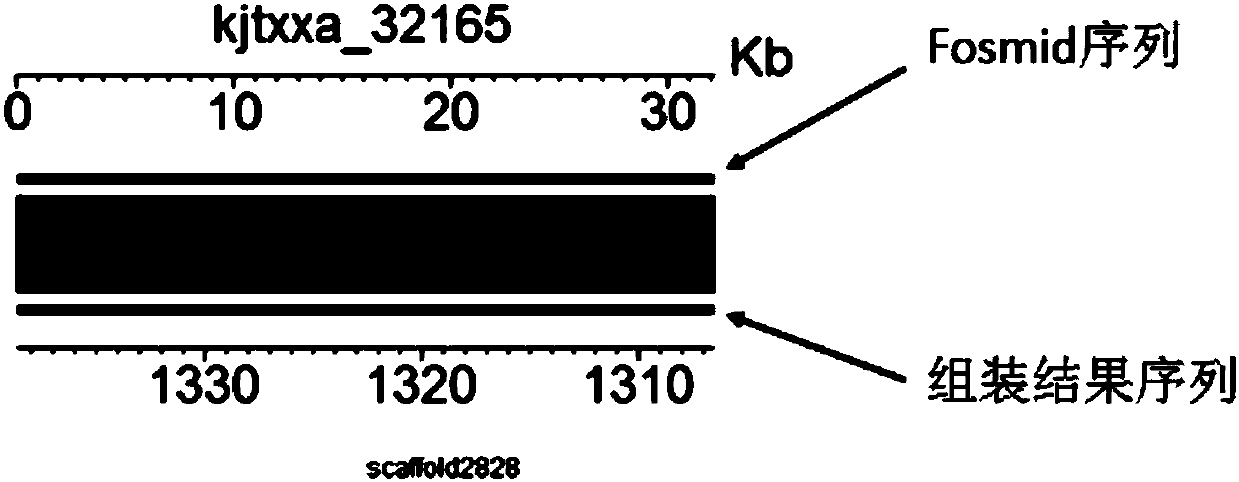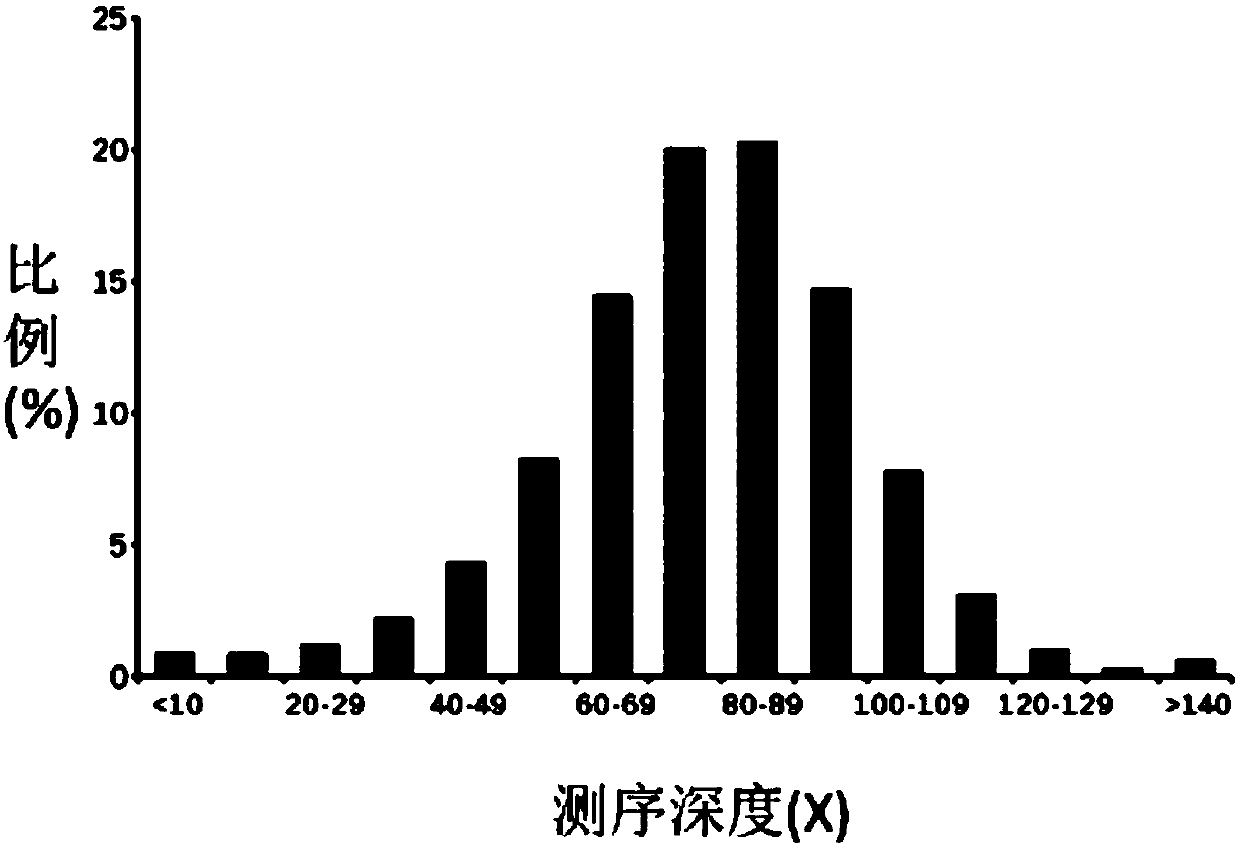Method and device of estimating and verifying sequence assembly result of three-generation sequencing
A technology for sequence assembly and next-generation sequencing, which is used in sequence analysis, special data processing applications, instruments, etc., and can solve problems such as low coverage depth
- Summary
- Abstract
- Description
- Claims
- Application Information
AI Technical Summary
Problems solved by technology
Method used
Image
Examples
Embodiment 1
[0064] Embodiment 1, the concrete application example of the corn genome of the method of the present invention
[0065] (1) Three-generation sequence assembly
[0066] Use the third-generation assembly software FALCON to assemble the 80X third-generation maize genome data (Pacbio single-molecule real-time sequencing (SMRT) results), and use the third-generation original data to polish the assembly results, and then use the 60X second-generation data to polish the assembly results Further error correction was performed to obtain the final assembly result of the maize genome.
[0067] (2) Comparison of the second-generation sequence and the third-generation assembly results
[0068]Use SOAPAligner software to filter the second-generation sequence of 60X PE250 (filtered second-generation sequence, the sequence after removing the adapter and low-quality bases. From the original data to the effective data filtering, it is processed in three steps: 1) filter adapter: sequencing re...
PUM
 Login to View More
Login to View More Abstract
Description
Claims
Application Information
 Login to View More
Login to View More - R&D
- Intellectual Property
- Life Sciences
- Materials
- Tech Scout
- Unparalleled Data Quality
- Higher Quality Content
- 60% Fewer Hallucinations
Browse by: Latest US Patents, China's latest patents, Technical Efficacy Thesaurus, Application Domain, Technology Topic, Popular Technical Reports.
© 2025 PatSnap. All rights reserved.Legal|Privacy policy|Modern Slavery Act Transparency Statement|Sitemap|About US| Contact US: help@patsnap.com



